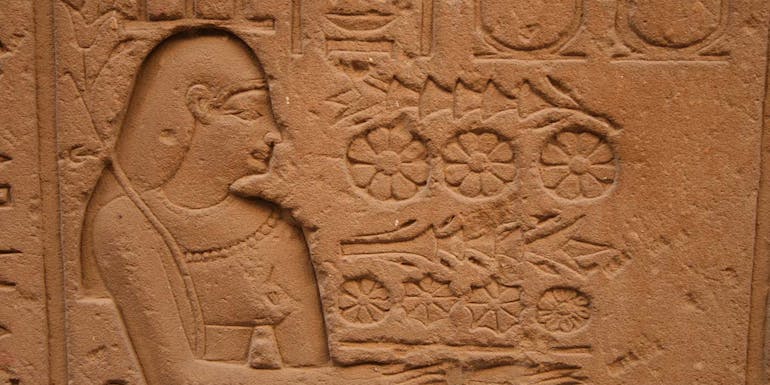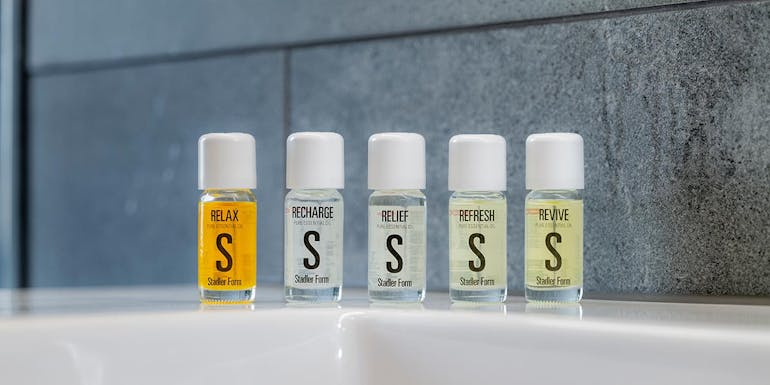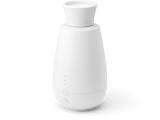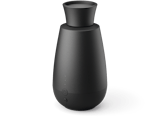
Usha Müller, 9 December 2020
Aromatherapy
The history of aromatherapy – then and now
Essential oils have been very important in a wide range of different cultures around the world for millennia. The fact that fragrance essences have a specific effect was apparent to even the most ancient races. The Egyptians and Greeks used essential oils for ritual and healing purposes, as did the Chinese and Indians. The effect of perfumes on the human body and early forms of aromatherapy were already known in Ancient Egypt. The systematic extraction of essences for cosmetic or therapeutic purposes did not develop, however, until much later. Today the use of essential oils is on the increase and aromatherapy has found its way into use by the general public.
Use of essential oils in antiquity
The advanced Mesopotamian and Egyptian cultures used perfumes or parts of plants for therapeutic, cosmetic or ritual purposes. At that time, though, use of these valuable fragrance essences was reserved for priests and rulers. Pure natural oils played an important role in Egyptian ceremonies; they were used to purify the air or as sacrifices to the gods. The scented essences were used for medical purposes in the form of baths, ambient perfumes and massage oils, or as a medicine. They were popular for use as cosmetics when incorporated into salves or pastes. One of the most famous users of essential oils must be the Egyptian queen Cleopatra.
One of the most valuable and oldest pieces of evidence for the art of distillation existing for millennia is Mesopotamian distilling equipment, which archaeologists have found in recent excavations. It was possible to determine clearly that the distillation equipment was used to obtain essential oils. Even then essential oils were extracted from parts of plants, especially peels and bark, using steam distillation.
Much of Egyptian culture would have remained hidden from us without the effect of essential oils. In Ancient Egypt the dead were rubbed with cedarwood oil, which has a preservative effect, during mummification. The same applies to preserving ancient papyrus scrolls. Cedarwood oil was also used as incense or as an additive in hair and skincare products. It has been possible to decipher secret recipes for salves, pastes and incense made with pure natural oils – written on Ancient Egyptian clay tablets. It is hard to overstate the importance of fragrance essences in Ancient Egypt, as perfumes were dedicated to a deity in Ancient Egyptian mythology – Nefertem – the god who protected perfumes, salves and anointing oils.
At the time of the Babylonians, essential oils were used to perfume the mortar with which the Babylonians built their temples – preferably with myrtle, cedarwood and cypress. Nowadays all three oils are used therapeutically. The inhabitants of China and India also produced essential oils, especially from roses and calamus. The essences obtained were used for healing purposes, such as medical massages.
Use of essential oils by the greeks and romans
Knowledge of aromatic essences and fragranced water was passed on when the Greeks and Romans conquered the Egyptian empire. They absorbed the Egyptians’ knowledge and experience of extracting oils from medicinal plants. Both the Greeks and the Romans used distillation processes to systematically obtain essential oils, although not on the same scale as today.
The Greek Hippocrates, who is regarded as the spiritual father of modern medicine, was a clear advocate of essential oils for medicinal purposes. He prescribed pleasant-smelling incense and hot wraps to cure certain illnesses.
Use of aromatic essences experienced a major upsurge with the Romans. Essential oils were intentionally used for healing purposes. Stories handed down by a Roman historian also report the use of mint leaves to clean hospitals. The valuable oils were not only popular with the Romans for medicinal reasons, they were also used on a large scale for cosmetics, in perfumes, as scented body oils and in nice-smelling cosmetics.
Aromatherapy in the case of the persians and during the middle ages
After knowledge of herbs and their effects had settled down, Arabic doctors and alchemists passed on their knowledge in the 11th century. The renewed upsurge in aromatherapy is ascribed to the invention by Persian doctor and alchemist Ibn Sina – known to us as Avicenna. Ibn Sina invented a condensing coil for steam distillation which helped to make distillation of essential oils much more effective and better. As a result, essential oils and aromatherapy became more important again. Ibn Sina’s “Canon of Medicine” remained the most influential medical textbook until the 16th century. In it the doctor recommended essential oils and infusions to treat physical and mental illnesses.
In the 15th century the choice of plants for producing essential oils increased massively, including oils from juniper, rose, sage, and rosemary, which are still used today. Around 1500, one of the most famous European doctors, Paracelsus, studied pure natural oils in depth. Paracelsus investigated the effect of essential oils and incorporated these natural essences into his remedies.
Start of aromatherapy in medicine
The French chemist and perfumer René-Maurice Gattefossé discovered the effect of essential oils (again) by chance around 1920 and caused a resurgence in aromatherapy. During a chemical experiment in his laboratory, Gattefossé burnt his arm and immersed it in the nearest liquid, luckily a barrel of lavender oil. The pain quickly subsided, the burns healed very quickly and did not leave any scars, to Gattefossé’s amazement. This moment was the start of the scientific study of the healing properties of essential oils. René-Maurice Gattefossé, the founder of aromatherapy, devoted the rest of his life to researching pure natural oils for therapeutic, medical and aesthetic purposes. His book “Aromatherapy”, published in 1939, is still consulted today.
Aromatherapy today
When aromatherapy is mentioned today, we mean the effect of essential oils to treat mood disorders and illnesses. The oils are used to increase wellbeing and alleviate illnesses. Aromatherapy is regarded as a form of phytotherapy (plant-based healing) and is used around the world. In many countries aromatherapy is even part of medical treatment in schools.
Over the last 30 years aromatherapy has become increasingly popular. This is due in no small part to investigations which prove the effectiveness of essential oils for body and soul. Also, the majority of people have access to plant essences, they are no longer reserved to the upper classes.
The choice of natural oils for aromatherapy, how they can be used, and for what applications are manifold. Discover more about the 10 most important essential oils or treat yourself to a pure, natural oil from our small but select Stadler Form collection.
If you have questions related to indoor room climate, please get in touch with us. Or subscribe to our newsletter to regularly get informed about current topics regarding indoor climate, experience reports or Stadler Form insights.








